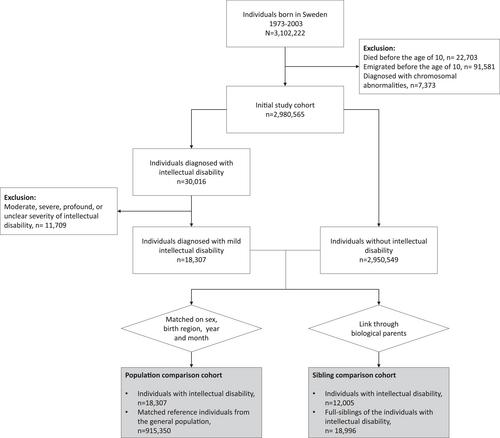Substance use-related problems in mild intellectual disability: A Swedish nationwide population-based cohort study with sibling comparison
Abstract
Background
Evidence for substance use-related problems in individuals with mild intellectual disability is sparse and mainly limited to selected psychiatric populations. We evaluated the risk of substance use-related problems in individuals with mild intellectual disability compared to the general population. Additionally, we have performed secondary sibling comparison analyses to account for familial confounding.
Methods
We conducted a population-based cohort study of individuals born in Sweden between 1973 and 2003. A total of 18,307 individuals with mild intellectual disability were compared to 915,350 reference individuals from the general population and 18,996 full siblings of individuals with mild intellectual disability. Information on mild intellectual disability and substance use-related problems was obtained from several Swedish national and regional school and healthcare registers. Substance use-related problems were measured via corresponding diagnostic and legal codes and included alcohol use disorder, drug use disorder, alcohol-related somatic disease, conviction for a substance-related crime, and substance-related death.
Results
Individuals with mild intellectual disability had a higher risk of any substance use-related problem compared to the general population (HR, 1.81; 95% CI, 1.72–1.91), both in males (HR, 1.76; 95% CI, 1.65–1.89) and females (HR, 1.89; 95% CI, 1.74–2.05). The risks of substance use-related problems were particularly elevated among individuals with mild intellectual disability and psychiatric comorbidities (HR, 2.21–8.24). The associations were attenuated in the sibling comparison models.
Conclusions
Individuals with mild intellectual disability, especially those with psychiatric comorbidity, are at an elevated risk of substance use-related problems. Familial factors shared by full siblings contribute considerably to the association between mild intellectual disability and substance use-related problems.



 求助内容:
求助内容: 应助结果提醒方式:
应助结果提醒方式:


